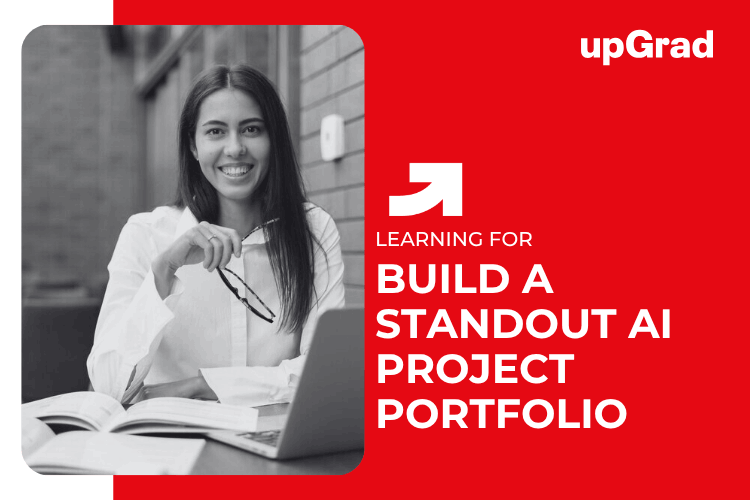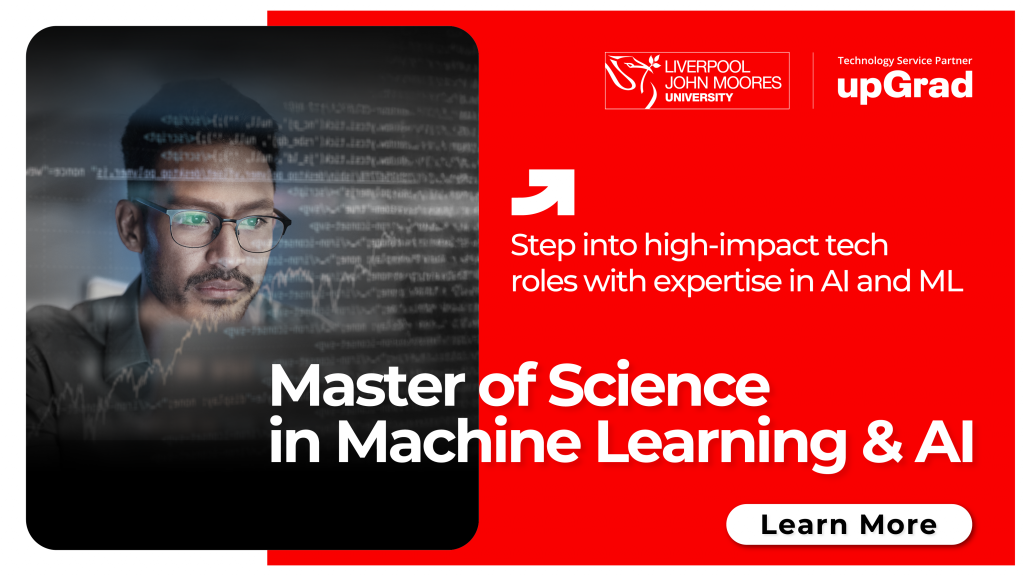For students interested in entering the field of artificial intelligence (AI) and machine learning (ML), building a strong portfolio is a key asset that showcases practical and hands-on skills, as well as career goals. A robust portfolio is often the first thing that draws employers toward your resume, and it displays your ability to build real AI solutions to solve meaningful problems. In this blog, we discuss how students in Canada can create standout AI project portfolios using tools, databases, and multi-modal systems to boost their resumes.
Take your skills to the next level — Explore AI/ML Courses
How to Build a Winning AI Project Portfolio from Scratch
Building a strong portfolio is essential for showcasing your AI skills and expertise to potential employers. Think about what gets you excited in the world of AI, and create a portfolio in that niche.
Here are the key steps to follow for building a winning AI project portfolio:
| Steps | What it Implies |
|---|---|
| 1. Choose your niche area. | AI is a broad field encompassing a range of applications, including computer vision, NLP, ML, deep learning, and robotics. For a strong AI portfolio, you need to choose a niche that matches your interests, goals, and strengths. For example, if developing chatbots interests you, you can choose natural language processing (NLP) as your niche. |
| 2. Be clear about the fundamentals. | Before building your AI portfolio, learn the basics, including key concepts, algorithms, tools, and frameworks. Use online courses, books, blogs, podcasts, and videos to build your foundation. Ensure you also have a solid understanding of mathematics, statistics, programming, and data structures. Platforms like upGrad Canada are ideal for starting to learn AI fundamentals. |
| 3. Work on your personal projects | Working on personal projects to showcase your skills is another way to build a strong AI portfolio. These projects let you apply what you have learned to solve real problems. |
| 4. Document your work and share it with others for feedback | For an effective AI portfolio, document everything properly and share your work with others using platforms like LinkedIn and YouTube. Your project documentation should include an appealing title, a short intro explaining the problem and goal, details about the data, methods, results, and challenges, a brief conclusion with key findings and improvements, links to your code and data, and a demo or video showing your project in action. |
| 5. Enhance your skills based on feedback. | Working on feedback to improve skills is another way to strengthen your AI portfolio. Use platforms like Stack Overflow, Reddit, and Kaggle to ask questions and learn from others. Practice coding or take advanced AI courses to boost your expertise in your niche area. |
| 6. Keep your portfolio updated and maintained. | Finally, keep your portfolio up-to-date and well-maintained. Add new projects, remove outdated ones, and highlight your latest skills and achievements. Ensure everything works correctly and address any errors, bugs, or broken links. Tools like Grammarly and Google Analytics can help you polish and track your portfolio. |
Further,
- Build your AI project portfolio on a topic that matters in the real world with real examples. Start with pain points and give a real solution.
- Base your AI project ideas on real-world data. You must know how and where to find data and effectively utilize it.
- Design the project on a robust system that functions seamlessly from end to end.
- Ensure that your project portfolio showcases your ability to scale.
- Build a clean, navigable personal AI project portfolio to ensure that employers that you understand the products.
- Seek feedback actively by sharing your portfolio with mentors, peers, and industry experts.
Also Read: How Online AI Courses Help Canadians Upskill and Reskill
Key Elements That Make an AI Project Stand Out
To make your AI portfolios look good as well as show fundamental problem-solving skills, you need to prove that you can build practical, real-world AI solutions. A strong portfolio shows how you think, how you build, and the impact of your work. The best portfolio would include:
- A clear bio highlighting your technical niche and target audience in a short, impactful introduction.
- Real-world projects showcasing end-to-end solutions, not just tutorials or Kaggle copies.
- Skill breakdown to organize tools and frameworks as per your proficiency and depth.
- Blog and write-ups for sharing insights, decisions, and cases from your projects.
- Polished GitHub with clean READMEs, diagrams, and setup instructions.
- Visible impact, including dashboards, live demos, or measurable business results.
Also Read: Top AI Project Ideas for Beginners in Canada
Build an Impressive AI Portfolio with upGrad’s Hands-On Learning Path
upGrad’s AI programs are designed to help learners build a job-ready portfolio through practical projects under the guidance of mentors and industry-relevant tools. With upGrad, you can apply, build, and showcase AI solutions that make an impact rather than just learning them.
Here are some relevant AI and machine learning courses offered by upGrad in association with international universities:
- Master of Science in Machine Learning & AI from Liverpool John Moores University
- Executive Diploma in Machine Learning by IIIT B
- Master of Science in Data Science from Liverpool John Moores University
🎓 Explore Our Top-Rated Courses in Canada
Take the next step in your career with industry-relevant online courses designed for working professionals in Canada.
FAQs On Building a Powerful AI Project Portfolio for Students in Canada
Q: Why do employers prioritize AI portfolios?
Ans: Employers prioritize AI portfolios so that they can review candidates and validate their skills and expertise before meeting them.
Q: How many projects should I include in my AI portfolio?
Ans: You can include three to five well-documented projects across different AI domains, which are generally enough to showcase your robust foundation.
Q: Do I need advanced math or coding skills to start?
Ans: You may not need advanced math and coding at the beginning. However, these skills are essential for strengthening your portfolio as you take on more complex projects.
Q: What’s the best platform to host an AI portfolio?
Ans: GitHub, Canva, and Hubspot are some platforms for hosting an AI portfolio.
Q: How does upGrad help in building a job-ready AI portfolio?
Ans: upGrad offers hands-on projects, real-world case studies, and mentorship from industry experts to help learners build strong, practical AI portfolios for beginners and professionals.









